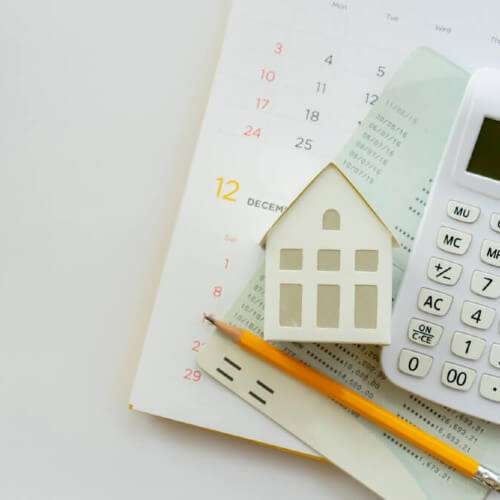 Written by James Hurwood
Written by James Hurwood
Reviewed by Stephen Zeller
Last updated 05/01/2024
![]()
Our General Manager of Money, Stephen Zeller knows that having a more accurate understanding of what you can afford is crucial when looking for a home loan. He’s got some tips for any prospective homebuyers looking to estimate what their home loan repayments might look like:
If you’re worried about a potential interest rate rise when shopping around for a home loan, factor in a ‘buffer’ on top of the standard interest rate. This will give you an idea of what your repayments might increase to if your rate was to go up, and therefore give you a better idea of whether a given home loan would be affordable or not in the event that rates go up.
Where possible, look to make weekly or fortnightly repayments towards your home loan. Making regular repayments will reduce the amount of interest you pay over the long term, and will subsequently help you pay off your home loan sooner.
If your budget and loan product allow you to, consider making additional repayments to your loan in excess of the minimum required repayment. You’ll be amazed at the interest you could save over the life of the loan!

Calculating home loan repayments by yourself is possible but it requires boring, painstaking work. Our online mortgage calculator can do it for you in seconds.
Once you’ve plugged in your desired loan amount, interest rate, loan term, estimated fees and your preferred repayment type and frequency, our mortgage repayment calculator will show you an estimate of:
While these figures will be estimations and not a perfect representation of what your home loan repayments will look like, they could give you a good idea of the space you’ll need in your budget to sustain a home loan.
Also keep in mind the size of the repayments on a home loan with a variable interest rate will fluctuate over its life (based on interest rate changes), making it near-impossible to know with certainty how much it could cost you overall.
It can also help you determine an appropriate loan type, property value and home loan size that suits your financial situation and priorities. With the help of a mortgage repayment calculator, you may realise that a smaller home loan is necessary, or that you can actually afford a larger home loan than you previously thought.
Whether you’re a first home buyer, refinancing or looking for an investment property, knowledge is power, and having an idea of what you can afford before you get the ball rolling may help you make smarter and better-informed financial decisions.
If you know what you’re looking for in a home loan and have a good idea of your budget, calculating your home loan repayments can be as simple as plugging in the right numbers.
That being said, there are a few tips, tricks and pitfalls to be aware of when using our home loan repayment calculator that may help you walk away with a stronger and more realistic idea of what your borrowing power looks like.
When looking at your borrowing power in the context of a home loan application, banks will typically use a home loan interest rate up to 3% higher than the actual rate. Put simply, this is to make sure you could still afford your home loan repayments and interest charges if interest rates were to change dramatically. So, when calculating your home loan repayments, you may want to check your desired home loan size against:
This will help you figure out if you can ‘truly’ afford a home loan of that size and afford continuing to service it in the event of significant interest rate changes.
Depending on your financial needs and priorities, you may have opted for a smaller loan term, say 15 or 20 years. However, you may also want to experiment with longer loan terms of up to 30 years, as this will typically leave you with smaller repayments stretched over a longer period of time. While you won’t necessarily service the home loan for the full 30 years, opting for a longer term can make budgeting and managing your cash flow easier.
You may also want to explore the merits and sizes of different repayment frequencies. While the long-term differences won’t be huge, you may like to find out whether more or less frequent repayments will better suit your budget and cash flow preferences, and whether you may be able to save some money in the long run.

If your end goal is the smallest regular repayments possible, there are some variables you can tweak and strategies you can adopt that could see your regular repayments shrink somewhat in size, either from the get-go or over the long term.
Shifting to more frequent repayments won’t make your regular repayments cheaper, but it could make them smaller. While two fortnightly repayments will generally add up to around the same as one monthly repayment, you may find that a smaller, more frequent repayment is easier to manage, or is better-suited to your financial situation.
A mortgage offset account is a type of transaction account that is linked to your home loan. The balance of this bank account is then offset against your home loan balance, meaning interest is charged on a smaller overall figure. This reduces your interest repayments, and subsequently the overall size of your home loan repayments.
For example, if you had $400,000 outstanding on your home loan and $50,000 in your offset account, you would only be charged interest on $350,000 of that loan amount.
![]()
Stephen has more than 30 years of experience in the financial services industry and holds a Certificate IV in Finance and Mortgage Broking. He’s also a member of both the Australian and New Zealand Institute of Insurance and Finance (ANZIIF) and the Mortgage and Finance Association of Australia (MFAA).
Stephen leads our team of Home Loan Specialists, and reviews and contributes to Compare the Market’s banking-relating content to ensure it’s as helpful and empowering as possible for our readers.